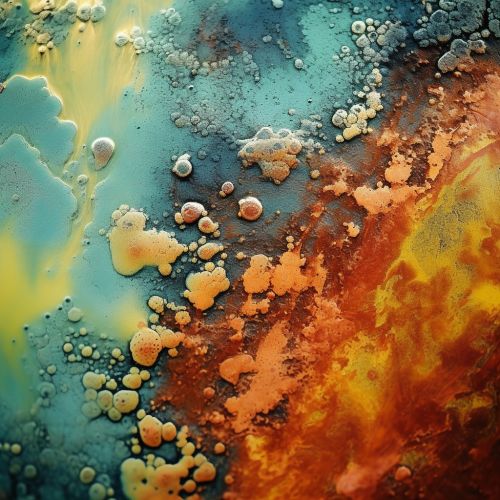Mold
Introduction
Mold is a type of fungal organism that plays a crucial role in the decomposition of organic matter. It reproduces through the production of spores, which are often airborne and can survive in harsh conditions. Mold is ubiquitous in the environment and can be found in various habitats, from soil and plants to indoor environments.


Biology and Life Cycle
Molds are eukaryotic organisms, meaning they have a true nucleus and complex cellular structures. They belong to the kingdom Fungi, which also includes yeasts and mushrooms. Molds are characterized by their filamentous growth form, known as hyphae, which collectively form a mycelium.
The life cycle of molds begins with the germination of spores, which are produced by mature molds and released into the environment. These spores can survive in harsh conditions and can be transported by air, water, or animals. Upon landing on a suitable substrate, the spores germinate and grow into hyphae. The hyphae then form a network, or mycelium, which serves as the feeding structure of the mold.
Ecology
Molds play a crucial role in the ecosystem as decomposers. They break down dead organic material, such as leaves, wood, and other plant debris, into simpler substances. This process helps to recycle nutrients in the environment.
Molds can also form symbiotic relationships with other organisms. For example, some molds form mutualistic relationships with plants, where the mold receives nutrients from the plant, and in return, the mold helps the plant absorb water and nutrients from the soil.
Health Effects
Exposure to mold can have various health effects, particularly in individuals with allergies or compromised immune systems. Common symptoms of mold exposure include nasal congestion, eye irritation, skin rash, and wheezing. In severe cases, exposure to certain types of mold can lead to serious conditions such as aspergillosis or mycotoxicosis.
Prevention and Control
Controlling mold growth in indoor environments involves controlling moisture levels, as molds require moisture to grow. This can be achieved through proper ventilation, use of dehumidifiers, and prompt repair of leaks.
In cases where mold growth has already occurred, it is important to properly clean and disinfect the affected area. This often involves the use of fungicides or other mold-killing agents. In severe cases, professional mold remediation may be necessary.
Industrial and Scientific Uses
Molds have various industrial and scientific uses. For example, certain species of mold are used in the production of antibiotics, such as penicillin. Molds are also used in the food industry, for the production of cheeses, breads, and alcoholic beverages.
In scientific research, molds are often used as model organisms. They are easy to grow and manipulate in the laboratory, and their genetics and biochemistry are well-studied.
